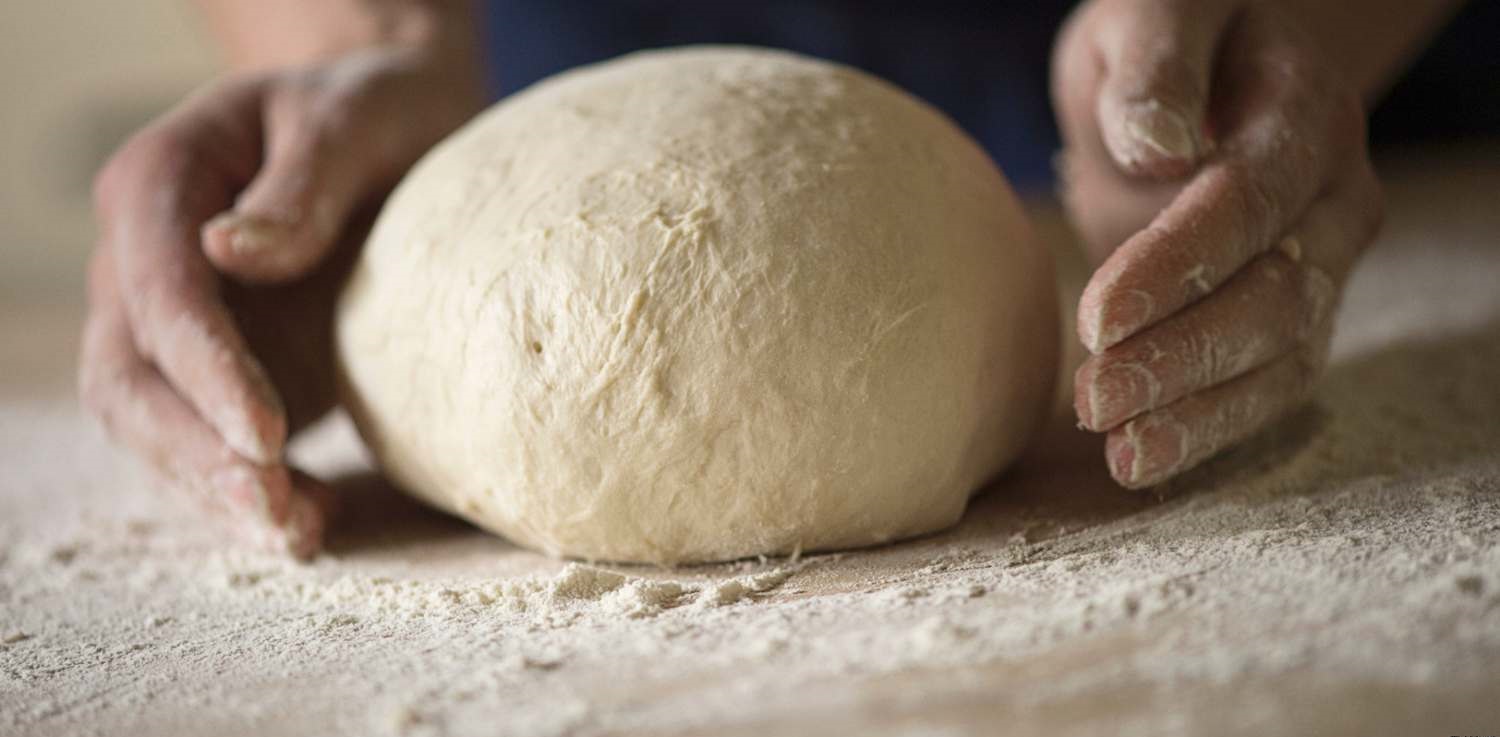ąōąŠč鹊ą▓ąŠąĄ ą┐ąĖčéą░ąĮąĖąĄ ą┤ą╗čÅ ą║ąŠąĮą║čĆąĄčéąĮąŠą│ąŠ ą┐ąŠą║čāą┐ą░č鹥ą╗čÅ - čŹč鹊 čāąČąĄ ąĮąĄ ┬½ą┐ąŠčģąŠą┤┬╗ ą▓ ą║čāą╗ąĖąĮą░čĆąĖčÄ ąĖą╗ąĖ ą╝ą░ą│ą░ąĘąĖąĮ. ąŁč鹊 ąĘą░ą║ą░ąĘ ąĖ ą┤ąŠčüčéą░ą▓ą║ą░ čĆą░ąĘą╗ąĖčćąĮčŗčģ ą▒ą╗čÄą┤, ą╝ąĖąĮčāčÅ ąŠą▒čēąĄą┐ąĖčé ą║ą░ą║ čüąŠčåąĖą░ą╗čīąĮčāčÄ ą┐čĆą░ą║čéąĖą║čā ą┐ąŠčéčĆąĄą▒ą╗ąĄąĮąĖčÅ ą┐ąĖčēąĖ.┬Ā
ąĀčŗąĮąŠą║ ą┤ąŠčüčéą░ą▓ą║ąĖ ą│ąŠč鹊ą▓ąŠą╣ ąĄą┤čŗ čāą▓ąĄą╗ąĖčćąĖą╗ čüą▓ąŠąĖ ąŠą▒čŖąĄą╝čŗ, ą▓ č鹊ą╝ čćąĖčüą╗ąĄ ąĖ ą▒ą╗ą░ą│ąŠą┤ą░čĆčÅ ą┐ą░ąĮą┤ąĄą╝ąĖąĖ ą║ąŠčĆąŠąĮą░ą▓ąĖčĆčāčüą░ ą▓ ą╝ąĖčĆąĄ. ąØąĄą▒ąŠą╗čīčłąĖąĄ ą║ąŠą╝ą┐ą░ąĮąĖąĖ ą▓čüąĄ čćą░čüč鹊 ąĖčüą┐ąŠą╗čīąĘčāčÄčé ą┤ą╗čÅ ąŠčĆą│ą░ąĮąĖąĘą░čåąĖąĖ ą┐ąĖčéą░ąĮąĖčÅ čāčüą╗čāą│ąĖ čéą░ą║ ąĮą░ąĘčŗą▓ą░ąĄą╝čŗčģ ŌĆ£č鹥ąĮąĄą▓čŗčģ ą║čāčģąŠąĮčīŌĆØ.┬Ā
ąØąŠą▓ą░čÅ č鹥ąĮą┤ąĄąĮčåąĖčÅ ą▓ čüč乥čĆąĄ ąŠą▒čēąĄčüčéą▓ąĄąĮąĮąŠą│ąŠ ą┐ąĖčéą░ąĮąĖčÅ ą┐ąŠąĘą▓ąŠą╗čÅąĄčé ą┐čĆąĄą┤ą┐čĆąĖąĮąĖą╝ą░č鹥ą╗čÄ ąĘąĮą░čćąĖč鹥ą╗čīąĮąŠ čĆą░čüčłąĖčĆąĖčéčī čüą▓ąŠą╣ ą│ąĄąŠą│čĆą░čäąĖč湥čüą║ąĖą╣ čĆčŗąĮąŠą║ ą┐ąŠčéčĆąĄą▒ą╗ąĄąĮąĖčÅ. ą¤ąŠ čéą░ą║ąŠą╝čā ą┐čĆąĖąĮčåąĖą┐čā čĆą░ą▒ąŠčéą░ąĄčé ąĖ ą┐čĆąŠąĖąĘą▓ąŠą┤čüčéą▓ąŠ ą▒ąŠčĆč鹊ą▓ąŠą│ąŠ ą┐ąĖčéą░ąĮąĖčÅ. ąĀą░ąĘą╗ąĖčćąĖąĄ, ą║ą░ą║ ą┐čĆą░ą▓ąĖą╗ąŠ, č鹊ą╗čīą║ąŠ ą▓ ąŠą▒čŖąĄą╝ą░čģ ąĖ ą╝ą░čüčüąŠą▓ąŠčüčéąĖ.┬Ā ąöą╗čÅ ąŠčéą║čĆčŗčéąĖčÅ dark kitchen ąĖąĮąŠą│ą┤ą░ ą┤ąŠčüčéą░č鹊čćąĮąŠ ąĮąĄčüą║ąŠą╗čīą║ąŠ ąĮąĄą▒ąŠą╗čīčłąĖčģ ą║ąŠčéą╗ąŠą▓ ąĮą░ ą║čāčģąĮąĄ, ąĮąŠ, čćą░čēąĄ ą▓čüąĄą│ąŠ, ą┐čĆąĖ ą┤ą░ąĮąĮąŠą╣ ą▒ąĖąĘąĮąĄčü-ą╝ąŠą┤ąĄą╗ąĖ ą┐čĆąŠč乥čüčüąĖąŠąĮą░ą╗čīąĮą░čÅ ą║čāčģąĮčÅ ą▒ąŠą╗čīčłąĄ čüąŠąŠčéą▓ąĄčéčüčéą▓čāąĄčé ą║ąŠą╝ą┐ą░ą║čéąĮąŠą╝čā ą┐ąĖčēąĄą▓ąŠą╝čā ą┐čĆąŠąĖąĘą▓ąŠą┤čüčéą▓čā, ą│ą┤ąĄ ąĖčüą┐ąŠą╗čīąĘčāčÄčéčüčÅ ą┐čĆąŠč乥čüčüąĖąŠąĮą░ą╗čīąĮčŗąĄ čāčüčéą░ąĮąŠą▓ą║ąĖ čéą░ą║ąĖąĄ, ą║ą░ą║ ą┐čĆąŠą╝čŗčłą╗ąĄąĮąĮčŗąĄ čüą║ąŠą▓ąŠčĆąŠą┤čŗ, ą▒ą╗ą░ąĮčłąĖčĆąŠą▓ą░č鹥ą╗ąĖ, ą▓ą░čĆąŠčćąĮčŗąĄ ą║ąŠčéą╗čŗ, čüąĖčüč鹥ą╝čŗ Cook and Chill, ą║ąŠąĮą▓ąĄą╣ąĄčĆąĮčŗąĄ čäčĆąĖčéčÄčĆąĮąĖčåčŗ ą┤ą╗čÅ HoReCa, ą░ą┐ą┐ą░čĆą░čéčŗ ą┤ą╗čÅ ą│ą╗čāą▒ąŠą║ąŠą╣ ąČą░čĆą║ąĖ ąĖą╗ąĖ ąČą░čĆą║ąĖ ą┐ąŠą┤ ą▓ą░ą║čāčāą╝ąŠą╝ ąĖ ą╝ąĮąŠą│ąŠąĄ ą┤čĆčāą│ąŠąĄ.┬Ā
ą×ą┤ąĮąĖą╝ ąĖąĘ ąŠčüąĮąŠą▓ąĮčŗčģ čéčĆąĄą▒ąŠą▓ą░ąĮąĖą╣ ą║ ąŠą▒ąŠčĆčāą┤ąŠą▓ą░ąĮąĖčÄ ą▓ čéą░ą║ąŠą╝ č乊čĆą╝ą░č鹥 čÅą▓ą╗čÅąĄčéčüčÅ čüą▓ąĄąČąĄčüčéčī ą┐čĆąŠą┤čāą║čéą░ ą┐ąŠčüą╗ąĄ ą┐ąĄčĆąĄčĆą░ą▒ąŠčéą║ąĖ, ą║ąŠč鹊čĆą░čÅ čüąŠčģčĆą░ąĮčÅąĄčéčüčÅ ąĖ ą┐čĆąĖ ą┤ą╗ąĖč鹥ą╗čīąĮąŠą╝ čģčĆą░ąĮąĄąĮąĖąĖ. ąÜ čéą░ą║ąĖą╝ čüąĖčüč鹥ą╝ą░ą╝, ąĮą░ą┐čĆąĖą╝ąĄčĆ, ąŠčéąĮąŠčüąĖčéčüčÅ Cook and Chill. ąŁč鹊 ą┐čĆąĖąĮčåąĖą┐ ą┐ąŠą┤čĆą░ąĘčāą╝ąĄą▓ą░ąĄčé ą│ąŠč鹊ą▓ąĮąŠčüčéčī ą┐čĆąŠą┤čāą║čéą░ ą┤ąŠ čüąŠčüč鹊čÅąĮąĖčÅ ┬½ą┐čĆą░ą║čéąĖč湥čüą║ąĖ ą│ąŠč鹊ą▓ąŠ┬╗, ąĄčüą╗ąĖ ąĖčüą┐ąŠą╗čīąĘąŠą▓ą░čéčī ą┐ą░čĆą░ą╗ą╗ąĄą╗čī čü ą┐ą░čüč鹊ą╣ ŌĆō al dente, ą┐ąŠčüą╗ąĄ č湥ą│ąŠ ą┐čĆąŠąĖąĘą▓ąŠą┤ąĖčéčüčÅ ą▒čŗčüčéčĆąŠąĄ ąŠčģą╗ą░ąČą┤ąĄąĮąĖąĄ ą┐čĆąŠą┤čāą║čéą░, čāą┐ą░ą║ąŠą▓ą║ą░, ąĘą░ą╝ąŠčĆąŠąĘą║ą░ ąĖ, ą┐ąŠčüą╗ąĄą┤čāčÄčēą░čÅ ą┤ąĖčüčéčĆąĖą▒čāčåąĖčÅ. ąóą░ą║ą░čÅ č乊čĆą╝ą░ č鹥čĆą╝ąŠąŠą▒čĆą░ą▒ąŠčéą║ąĖ čćą░čēąĄ ą▓čüąĄą│ąŠ ąĖčüą┐ąŠą╗čīąĘčāąĄčéčüčÅ ą┐čĆąĖ ą▓ą░čĆą║ąĄ ą║čĆčāą┐, ąŠą▓ąŠčēąĄą╣, čĆčŗą▒čŗ, ą╝čÅčüą░, čäčĆąĖą║ą░ą┤ąĄą╗ąĄą║ ąĖ ą╝ąĮąŠą│ąĖčģ ą┤čĆčāą│ąĖčģ ą┐čĆąŠą┤čāą║č鹊ą▓.

















